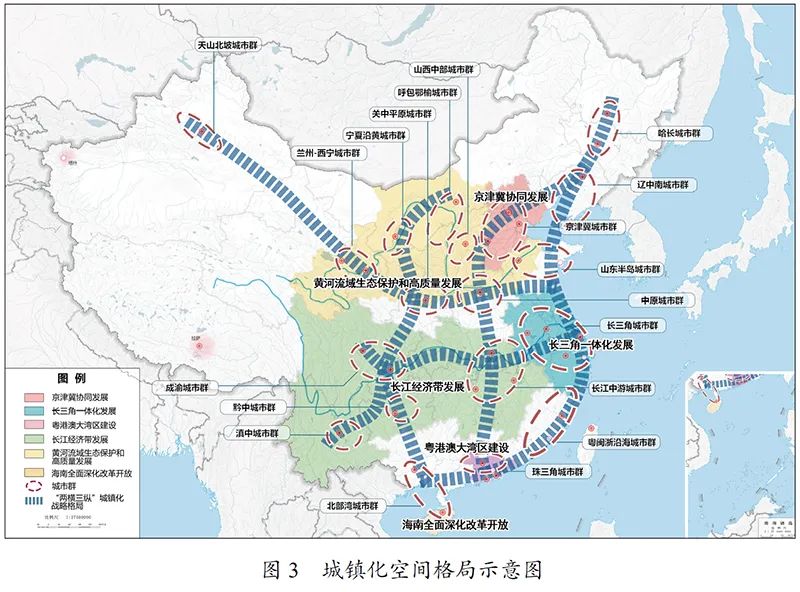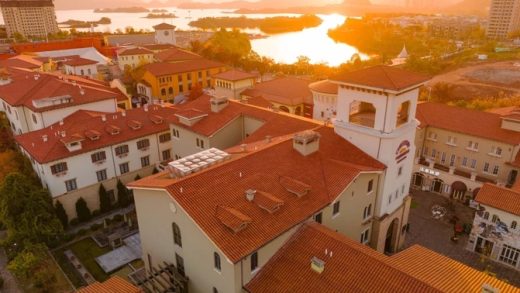
Read More《时隔十年,最高规格会议定调新一轮城市发展》
Positive Comments: Setting Out Again After a Decade, the Central Urban Work Conference Anchors a Scientific Path for the Urban Development of Chinese – style Modernization
After a decade’s interval, the Central Urban Work Conference was convened again at the highest level. Its core value lies in providing systematic strategic guidance for China’s urban development during the critical transition period from “scale expansion” to “quality leap”. The six major directions put forward by the conference, namely “structural optimization, kinetic energy conversion, quality improvement, green transformation, cultural heritage continuation, and governance efficiency enhancement”, not only respond to the experiences and problems accumulated in urban development over the past decade but also prospectively layout the development logic for the 15th Five – Year Plan period and even a longer cycle. The positive significance can be interpreted from the following three aspects:
I. Scientific Nature of Policy Orientation: A Deep – seated Leap from “Spatial Expansion” to “People – Centered”
The conference clearly stated that “cities are built and evolved for people”, placing “people – centered” at the core of urban development. This is a fundamental correction of the previous development models that “emphasized construction over service” and “emphasized scale over quality”. Over the past decade, China’s permanent – resident population urbanization rate has increased from 56.1% to 65% (data from 2023). However, some cities have fallen into the “sprawling” – style expansion, resulting in “urban diseases” such as traffic congestion, shortage of public services, and “identical cities”. The conference emphasizes that “production spaces should be intensive and efficient, living spaces should be livable and appropriate, and ecological spaces should be beautiful”, and takes “human modernization” as the ultimate goal of urban development. In essence, it restores the urban function from an “economic carrier” to the essence of a “living community”. For example, the specific requirements mentioned in the conference, such as services for the elderly and children, refined governance, and improvement of cultural venues, are directly aimed at residents’ sense of gain and happiness. This shift from “things to people” marks the maturity of urban development concepts.
II. Systematic Nature of Reform Layout: Breaking Through Development Bottlenecks with Multi – dimensional Breakthroughs
The conference’s deployment of urban development covers ten dimensions, including space, planning, kinetic energy, and governance, forming a closed – loop of “top – level design + specific paths”. Taking the “change in spatial scale” as an example, the hierarchical layout from “urban agglomerations” to “metropolitan areas” and then to “county towns” not only solves the problem of excessive concentration in central cities (such as the relocation of non – capital functions in Beijing) but also promotes the coordination of large, medium, and small cities through “metropolitan areas on the track” and “shared construction and sharing of basic public services”, providing an operable means for regional coordinated development. Another example is the “integration of multiple plans” reform, which integrates the main functional area plan, land use plan, etc. into a single “map” of territorial spatial planning, effectively avoiding the waste of resources caused by overlapping plans in the past (such as the repeated construction of “building and then demolishing” in some cities). In addition, the transformation of “urban renewal” from “cosmetic projects” to “fundamental reconstruction” (such as the “unified rental renovation” in Shenzhen and the industrial upgrading of the Zhongda Textile Circle in Guangzhou) combines the revitalization of existing space with the solution of social problems, providing an innovative model for the “stock era”.
III. Forward – looking Nature of Development Kinetic Energy: Dual Empowerment of New – quality Productivity and Urban Resilience
The conference lists “innovation – driven” as the primary goal of urban development, proposing to “continuously make breakthroughs in developing new – quality productivity”. This deployment accurately grasps the core of urban competition. Currently, there are 24 cities in China with a GDP of over one trillion (data from 2023). However, some cities are facing the bottleneck of “diminishing marginal benefits of scale” (such as the slowdown of GDP growth in some cities after reaching one trillion). The conference emphasizes “switching to the innovation track”. By cultivating new – quality productivity such as artificial intelligence, low – altitude economy, and new energy, it can not only break through the growth ceiling but also provide a transformation demonstration of “from scale – driven to innovation – driven” for cities across the country. At the same time, the conference includes “resilient cities” in the goals. In response to the frequent occurrence of extreme climates (such as the catastrophic rainstorm in Zhengzhou and the continuous high – temperature in the south), it requires the reconstruction of the risk – resistance ability of the spatial and social systems. This is not only a profound understanding of the fact that “safety is the prerequisite for development” but also provides a Chinese solution for urban governance under the background of global climate change.
Negative Comments: The New Path of Urban Development Faces Multiple Real – world Challenges, and Reforms Need to Overcome Three Major Difficulties
Although the Central Urban Work Conference has pointed out the direction for urban development, there are still multiple obstacles to overcome from the “blueprint” to the “reality”. Currently, the complexity of urban development, the solidification of the interest pattern, and the pain of the transformation between the old and new models may become the key factors restricting the progress of reforms.
I. Lagging Institutional Innovation: The Difficult Problem in the “Deep – water Area” of the Separation of Administrative Regions and Economic Zones
The conference proposes to “explore the appropriate separation of administrative regions and economic zones”, which is the core to solve the problem of “inefficient coordination in urban agglomerations”. However, it is extremely difficult to implement the system. For example, in the construction of metropolitan areas, issues such as fiscal revenue sharing, statistical accounting, and sharing of public services across administrative regions involve the core interests of local governments. Taking a metropolitan area in the Yangtze River Delta as an example, due to the difficulty in negotiating the tax – sharing ratio during the industrial transfer between the central city and the surrounding cities, some projects have only been discussed but not implemented. Another example is the construction of cross – regional rail transit. Disputes among cities along the line over investment sharing and operation revenue distribution may delay the process of “metropolitan areas on the track”. Without a top – level coordination mechanism at the national level (such as the legal authorization of cross – regional management committees and standardized rules for interest compensation), “coordinated development” may remain at the slogan level.
II. The Pain of Conceptual Transformation: The Path Dependence from “Incremental Expansion” to “Stock Revitalization”
The conference emphasizes that in the “stock era”, it is necessary to shift from “incremental expansion” to “stock revitalization”. However, the “path dependence” of local governments may become a resistance. In the past twenty years, the “land – based finance” has supported the rapid development of cities, and some localities have formed an inertial model of “selling land – financing – construction”. In the stock era, urban renewal requires the combination of “demolition, reconstruction, and renovation” and “industrial upgrading” (such as the transformation of urban villages in Guangzhou, which needs to balance the interests of original residents, enterprise costs, and urban function improvement). However, some localities are still accustomed to “large – scale demolition and construction” to quickly achieve political achievements, rather than patiently exploring the long – term value of the existing space. In addition, stock revitalization involves complex property – right relationships (such as the negotiation among homeowners in the renovation of old residential areas and the historical issues in the transformation of industrial land). If local governments lack the governance ability of “meticulous work”, it may lead to “stagnation of renewal” or “simplified handling”, which may exacerbate social contradictions.
III. The “Ecological Shortage” in the Cultivation of New – quality Productivity: Insufficient Coordination between Innovation and Talent
The conference proposes to “build vibrant innovative cities”. However, there are still problems in the current urban innovation ecosystem, such as “emphasizing technology over transformation” and “emphasizing introduction over cultivation”. For example, although some cities have a large number of universities and research institutions, the local conversion rate of scientific and technological achievements is less than 10% (according to the 2024 “China Urban Innovation Index Report”). The key reason is the lack of connection among pilot – scale platforms, industrial capital, and market – oriented service institutions. Another example is the disconnection between “talent introduction” and “talent utilization” in “talent – driven innovation”. Some cities attract high – end talents by “offering houses and money”, but lack matching industrial scenarios (such as artificial intelligence talents having no place to use their skills in traditional manufacturing cities), resulting in a high talent loss rate. In addition, the cultivation of new – quality productivity (such as low – altitude economy and quantum computing) requires cross – departmental coordination (such as airspace management and standard setting). If the administrative barriers are not broken, it may delay the commercialization process of technologies.
Suggestions for Entrepreneurs: Seize the New Opportunities in Urban Development and Find Breakthrough Points in “Stock” and “Innovation”
The signals released by the Central Urban Work Conference provide clear guidance for entrepreneurs. Combining the keywords such as “stock revitalization”, “new – quality productivity”, and “refined governance” put forward by the conference, entrepreneurs can make arrangements from the following four aspects:
I. Deeply Cultivate the Existing Space and Explore Service – oriented Opportunities in “Urban Renewal”
The transformation of urban renewal from “space transformation” to “social problem solving” provides entrepreneurs with niche markets. For example, in response to the aging – friendly needs in the renovation of old residential areas (the population over 60 years old in China exceeds 290 million), intelligent elderly – care equipment (such as fall – monitoring systems) and community elderly – care service platforms can be developed. In response to the public nature of “informal spaces” (such as vegetable markets and urban villages), the “space operation + community service” model can be explored (such as jointly creating a “community living circle” with local merchants to provide convenient services and cultural activities). In response to the revitalization of industrial land, it can be transformed into “industrial shared spaces” (such as transforming old factories into incubators for small and medium – sized technology enterprises, and providing supporting services such as testing and financing).
II. Focus on New – quality Productivity and Bind to the “Key Nodes” of the Urban Innovation Ecosystem
The cultivation of new – quality productivity requires a closed – loop of “technology – capital – scenario”. Entrepreneurs can provide solutions of “technology application + scenario implementation” around the industries that cities focus on (such as artificial intelligence, low – altitude economy, and new energy). For example, in the field of artificial intelligence, special algorithms can be developed for the needs of refined urban governance (such as traffic congestion prediction and waste sorting optimization). In the field of low – altitude economy, focusing on scenarios such as urban logistics (drone delivery) and emergency rescue (aerial fire – fighting), entrepreneurs can cooperate with local governments to build operation platforms. In the field of new energy, entrepreneurs can participate in the renovation projects of existing spaces such as “photovoltaic + building” and “energy storage + community”, and bind to the needs of urban green transformation.
III. Pay Attention to “People’s Needs” and Make Arrangements in the “Elderly and Children” and “Cultural Experience” Markets
The conference emphasizes that “urban governance should respond to personalized needs”. The markets of “elderly and children” and cultural services are two potential markets. For children, a integrated service of “community childcare + education” (such as after – school care + quality courses) can be developed to solve the problem of “difficulty in taking care of children” for dual – income families. For the elderly, services of “home aging – friendly renovation + health management” can be provided (such as installing intelligent monitoring equipment and linking with community hospitals to provide remote diagnosis and treatment). For cultural needs, the urban cultural heritage (such as intangible cultural heritage and time – honored brands) can be explored, and “cultural experience + business” projects (such as traditional handicraft workshops and themed cultural markets) can be developed, which not only meets the upgrading of citizens’ cultural consumption but also helps to shape the city’s characteristics.
IV. Adapt to “Refined Governance” and Become the “Connector” between the Government and the Market
The transformation of urban governance from “extensive management” to “co – construction, co – governance, and co – sharing” allows entrepreneurs to play the role of “governance assistants”. For example, in response to the “right – of – way allocation” in urban management (such as the parking of electric vehicles and the management of night markets), a “digital management platform” can be developed (monitoring the traffic flow through Internet of Things devices to assist the government in dynamically adjusting policies). In response to the “last – mile” problem of public services (such as garbage classification and community emergency response), solutions of “market – oriented operation + residents’ participation” can be provided (such as a point – reward mechanism and a community volunteer platform). By cooperating with government departments, entrepreneurs can not only solve practical problems but also establish a long – term trust relationship, laying a foundation for business expansion.
Overall, the convening of the Central Urban Work Conference marks that China’s urban development has entered a new stage of “quality – first and people – centered”. Entrepreneurs need to break out of the “quick – money – making” mindset, provide products and services to “solve problems” around the core contradictions in urban development (such as stock revitalization, new – quality productivity, and refined governance), so as to seize opportunities in the new round of urban evolution and achieve common growth with the city.
- Startup Commentary”Building LLMs: The Knowledge Graph Foundation Every AI Project Needs”
- Startup Commentary”The 17th Year of Tmall Double 11 and the New Map Rewritten by AI”
- Startup Commentary”How to Prepare Your Data for Artificial Intelligence”
- Startup Commentary”Small and Medium-sized Banks: “Cutting the Tail” in Loan Assistance”
- Startup Commentary”The Six AI Giants on Stage: AGI Is No Longer a “Future” Thing”





